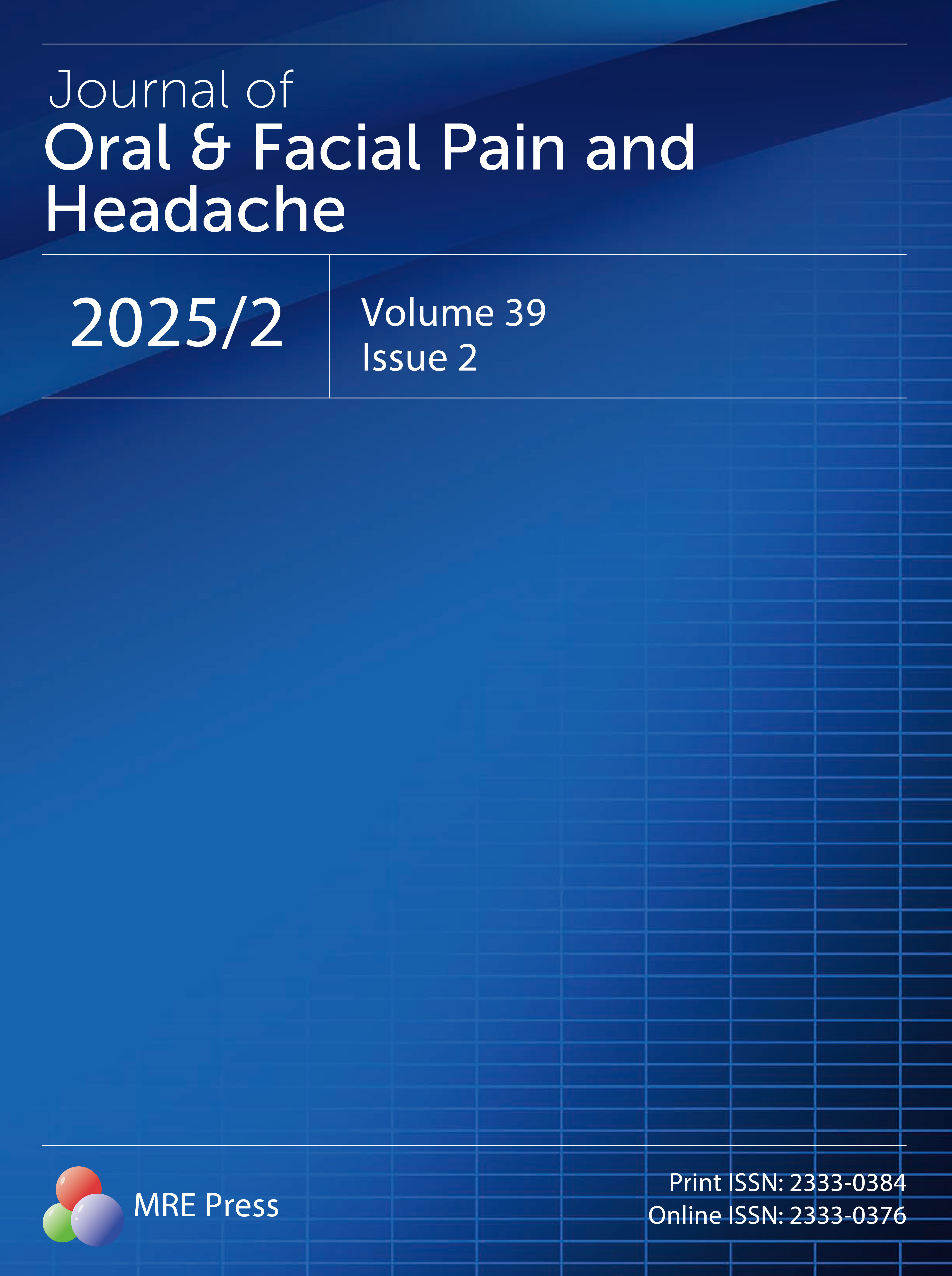Title
Author
DOI
Article Type
Special Issue
Volume
Issue
Article Menu
Export Article
More by Authors Links
Article Data
- Views 937
- Dowloads 45
Journal of Oral & Facial Pain and Headache (OFPH) is published by MRE Press from Volume 38 lssue 1 (2024). Previous articles were published by another publisher on a subscription basis, and they are hosted by MRE Press on www.jofph.com as a courtesy and upon agreement with Journal of Oral & Facial Pain and Headache.
Original Research
Open AccessCharacterization of 86 Bruxing Patients and Long-Term Study of Their Management With Occlusal Devices and Other Forms of Therapy
Characterization of 86 Bruxing Patients and Long-Term Study of Their Management With Occlusal Devices and Other Forms of Therapy
- Daniel Yustin1
- Peter Neff2
- M.R. Rieger3
- Thomas Hurst4
1Department of Fixed Prosthodontics and Occlusion, University of Texas at Houston, Health Sciences Center, Dental Branch, Houston, Texas
2Department of Occlusion, Georgetown University, School of Dentistry, Washington, DC
3Department of Oral Biomaterials, University of Texas at Houston, Health Sciences Center, Dental Branch, Houston, Texas
4University of Texas at Houston, Health Sciences Center, Dental Branch, Houston, Texas
Abstract
Of 353 patients screened, 86 answered positively to questions designed to identify bruxers. The bruxing patient profile revealed that 100% had working excursive interferences, 78% had balancing excursive interferences, and 95.4% had a premature contact into maximum intercuspation. Most of the bruxing patients had a chief complaint that related to pain, and 89.6% of the patients had a craniomandibular disorder. The patients were initially managed with an anterior deprogrammer and were later managed with other occlusal devices as signs and symptoms dictated. Definitive treatment was determined by the patient's maxillomandibular relationship.
Cite and Share
Daniel Yustin, Peter Neff, M.r. Rieger, Thomas Hurst. Characterization of 86 Bruxing Patients and Long-Term Study of Their Management With Occlusal Devices and Other Forms of Therapy. Journal of Oral & Facial Pain and Headache. 1993. 7(1);54-60.
References

Abstracted / indexed in
Science Citation Index (SCI)
Science Citation Index Expanded (SCIE)
BIOSIS Previews
Scopus: CiteScore 3.1 (2024)
Cumulative Index to Nursing and Allied Health Literature (CINAHL)
Submission Turnaround Time
Preliminary Review: Typically 1–7 days (median: 5 days)
Peer Review: Typically 4–16 weeks (median: 8.6 weeks)
Notes: Review times may vary depending on manuscript complexity or reviewer availability, with some articles requiring longer than 16 weeks. Your information is kept confidential throughout the review process.
Top
